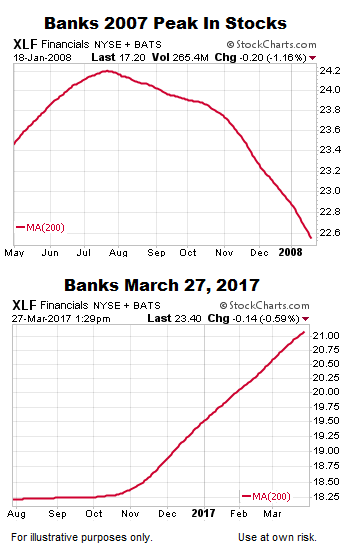Small Caps: Nothing Alarming Yet
Small caps (NYSE:IWM) and banks (NYSE:XLF) rallied after the U.S. election based on expectations for reduced regulations under the Trump administration. As shown in the chart below, the recent weakness in small caps falls into the “normal pullback within the context of an ongoing and established bullish trend” category. Small caps, as of this writing, remain above all three major Fibonacci retracements (Fibs) based on the pre-election low (point A).

How Concerning Is The S&P 500’s Pullback?
This week’s video covers a prudent and rational manner to monitor risk during inevitable “givebacks” or portfolio draw-downs. The S&P 500’s present-day profile is compared to the August 2015 pre-plunge profile, allowing us to better understand the odds of a similar waterfall decline following the tabling of the healthcare bill.
Are Banks On The Ropes?
Like small caps, thus far, the pullback in financial stocks has remained above all three major Fibonacci retracements based on the pre-election low (point A). The odds of a longer-term bearish trend change would improve if XLF drops below the third major Fib near $21.25. On Monday, XLF was trading at $23.36.

Banks: 2007 Vs. 2017
The Fibs help us monitor the probability of the current bullish trends continuing relative to the odds of a new bearish trend developing. The slope of XLF’s 200-day moving average helps us monitor the strength of the long-term trend in banks/financial stocks. The top chart below shows the long-term trend rolling over in a bearish manner in 2007; the bottom chart shows the present day trend.

